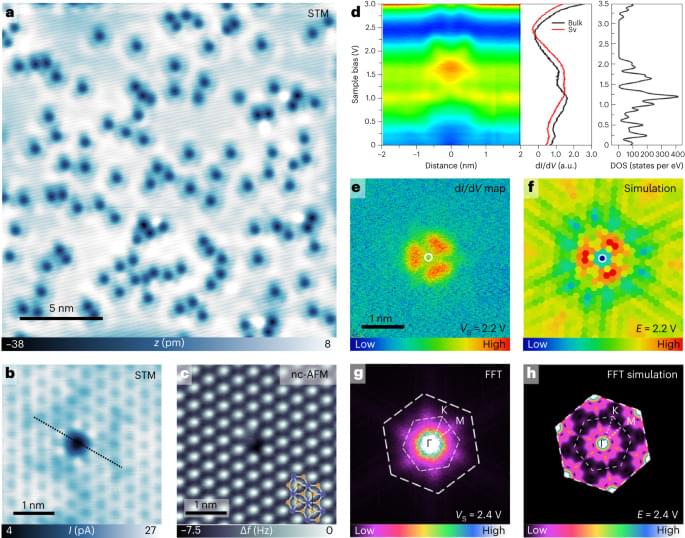We developed a technique to fabricate atomically precise quantum antidots with unprecedented robustness and tunable quantum hole states through self-assembled single vacancies in a two-dimensional transition metal dichalcogenide.



But most deep learning models are loosely based on the brain’s inner workings. AI agents are increasingly endowed with human-like decision-making algorithms. The idea that machine intelligence could become sentient one day no longer seems like science fiction.
How could we tell if machine brains one day gained sentience? The answer may be based on our own brains.
A preprint paper authored by 19 neuroscientists, philosophers, and computer scientists, including Dr. Robert Long from the Center for AI Safety and Dr. Yoshua Bengio from the University of Montreal, argues that the neurobiology of consciousness may be our best bet. Rather than simply studying an AI agent’s behavior or responses—for example, during a chat—matching its responses to theories of human consciousness could provide a more objective ruler.


The drugmakers designed their updated vaccines to target the omicron subvariant XBB.1.5, which is slowly declining nationwide. But health experts and initial data suggest that the new shots will still be effective against Eris, or EG.5, and other widely circulating variants – all of which are descendants of omicron.
“I think that these vaccines will provide very substantial protection against EG.5. Maybe just a little bit of loss, but it’s nothing that I’m very concerned about,” Dr. Mark Mulligan, director of the NYU Langone Vaccine Center, told CNBC. “It looks like we’re going to be OK.”
All three companies are still waiting for the Food and Drug Administration to approve their vaccines, meaning those jabs won’t be available to the public for a month or so. The Centers for Disease Control and Prevention also has to decide which Americans should get the shots and how often.
Sriharikota (AP), September 2
ISRO on Saturday launched the country’s ambitious Solar mission, Aditya L1, eyeing history again after its successful lunar expedition, Chandrayan-3, a few days ago.
Also read: Apart from India’s Aditya-L1, 5 missions are currently observing the sun.

A New York-based bank says a global cybersecurity incident has exposed sensitive customer data.
In a letter to customers, M&T Bank says the exploit involves the file transfer tool MOVEit, which is used to securely send and receive confidential information.
According to the bank, the attacker was able to access customer data by targeting one of the lender’s third-party vendors.


Unearthing of fossilized remains in Turkey suggests human origins may actually lie in Europe Africa has always been considered the cradle of mankind, with humans evolving from apes on the continent, before spreading to the rest of the world. But an intriguing find is challenging the long-standing assumption.

Year 2014 o.o!!!
Photo credit: amy stuart, UF/IFAS communications.
Human waste doesn’t need to be wasted, thanks to some University of Florida researchers. They’re working on a way to power rockets with poop. The technique could be used to cut mission costs for future return missions from the Moon—since astronauts will be making some of the fuel once they arrive.
